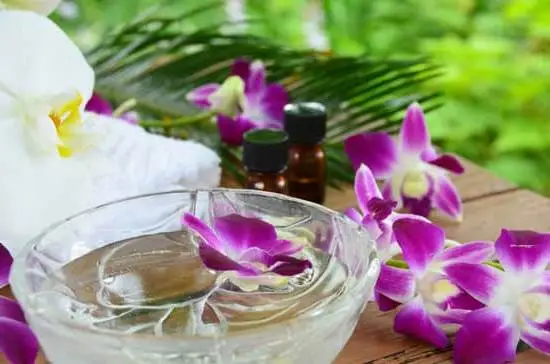Plant resin has been used in aromatherapy for centuries, valued for its therapeutic properties and aromatic appeal. In this article, we will explore the history and traditional use of plant resin in aromatherapy, as well as its modern applications in holistic healing practices. From its extraction process to its benefits and popular types, we will delve into the world of plant resin and how it can enhance overall well-being.
The use of plant resin in aromatherapy dates back to ancient civilizations, where it was treasured for its healing properties and spiritual significance. Today, plant resin continues to play a vital role in holistic wellness practices, offering a natural and powerful way to support physical, emotional, and mental health. With its soothing aroma and therapeutic effects, plant resin has become a staple in the world of aromatherapy.
In the following sections, we will explore what exactly plant resin is, how it is extracted, and the various types commonly used in aromatherapy. We will also delve into the numerous benefits of using plant resin in aromatherapy, as well as safety precautions when incorporating it into your wellness routine.
Additionally, we will provide guidance on how to effectively integrate plant resin into aromatherapy practices while exploring its synergistic effects with other techniques like massage and meditation. Get ready to embark on a journey through the diverse world of plant resin in aromatherapy.
What Is Plant Resin?
Plant resin is a natural substance derived from various plants and trees, including frankincense, myrrh, and copal, that has been used for centuries in traditional medicine and spiritual rituals. In aromatherapy, plant resin is prized for its aromatic properties and therapeutic benefits, making it a valuable resource for promoting overall well-being.
One of the most common methods of extracting plant resin is through a process called “tapping,” which involves making small incisions in the bark of the tree to allow the resin to ooze out. Once collected, the resin is then purified and processed into various forms such as essential oils, tinctures, or solid incense for use in aromatherapy practices.
There are several types of plant resin commonly used in aromatherapy, each with its own unique aromatic profile and healing properties. For example, frankincense is known for its grounding and calming effects, myrrh is revered for its ability to promote emotional balance and spiritual connection, and copal is valued for its purifying and uplifting qualities. These diverse plant resins offer a wide range of therapeutic benefits that can be tailored to individual wellness needs.
| Type of Plant Resin | Therapeutic Benefits |
|---|---|
| Frankincense | Grounding and calming effects |
| Myrrh | Promotes emotional balance and spiritual connection |
| Copal | Purifying and uplifting qualities |
Benefits of Using Plant Resin in Aromatherapy
Plant resin has been used for centuries in traditional healing practices, and its therapeutic benefits in aromatherapy are well-documented. Here are some of the key benefits of using plant resin in aromatherapy:
1. Promotes Relaxation: One of the most well-known benefits of using plant resin in aromatherapy is its ability to promote relaxation. When diffused or burned, the soothing aroma of plant resin can help calm the mind and body, reducing stress and anxiety levels.
2. Improves Mental Clarity: Plant resin has been found to have clarifying effects on the mind, helping to improve mental focus and concentration. This makes it an excellent choice for use during meditation, study sessions, or any task that requires cognitive clarity.
3. Enhances Emotional Well-Being: The aromatic compounds found in plant resin can also have a positive impact on emotional well-being. The pleasant scent can uplift the mood, alleviate feelings of sadness or depression, and create a sense of overall emotional balance.
In addition to these primary benefits, plant resin also possesses antibacterial and antifungal properties when used in aromatherapy. This makes it an excellent choice for purifying the air and supporting respiratory health.
When using plant resin in aromatherapy, it’s important to choose high-quality, pure resins from trusted sources to ensure maximum therapeutic benefits. Whether you choose to diffuse it, burn it as incense, or blend it with other essential oils, incorporating plant resin into your aromatherapy practice can be a powerful tool for enhancing overall wellness and vitality.
Popular Plant Resins Used in Aromatherapy
When it comes to aromatherapy, plant resins are essential ingredients that offer a wide range of therapeutic benefits. Some of the most commonly used plant resins in aromatherapy include frankincense, myrrh, and copal. Each of these resins possesses unique healing properties that make them valuable additions to holistic healing practices.
Frankincense, derived from the Boswellia tree, is known for its grounding and spiritually uplifting properties. It has been used for centuries in religious rituals and meditation practices due to its ability to induce a sense of calm and deepens spiritual connection. Myrrh, another popular plant resin, is prized for its soothing and purifying effects on the mind and body. Its warm, earthy aroma makes it an excellent choice for promoting emotional balance and relaxation in aromatherapy.
Copal resin, harvested from various trees around the world, has been traditionally used by indigenous cultures for its cleansing and energizing properties. In aromatherapy, copal resin is often utilized during meditation or energy healing practices to clear negative energies and uplift the spirit. These popular plant resins have been treasured throughout history for their potent therapeutic effects, making them valuable tools in modern holistic healing modalities such as aromatherapy.
| Plant Resin | Healing Properties |
|---|---|
| Frankincense | Grounding, spiritually uplifting |
| Myrrh | Soothing, emotional balance |
| Copal | Cleansing, energizing |
How to Use Plant Resin in Aromatherapy
Aromatherapy is a holistic healing practice that utilizes the natural scents of plant-based essential oils to promote overall well-being. Plant resin, also known as tree sap or gum, has been used for centuries in aromatherapy for its therapeutic properties. This section will provide a step-by-step guide on how to incorporate plant resin into aromatherapy practices, including methods for diffusing, burning, and blending with other essential oils.
Diffusing Plant Resin
One of the most popular methods for using plant resin in aromatherapy is through diffusion. To diffuse plant resin, you can use a traditional oil burner or an electric diffuser specifically designed for resins. Simply place a small amount of resin on the top of the burner or in the dish of the electric diffuser and allow it to gently heat up and release its aromatic compounds into the air.
Burning Plant Resin
Burning plant resin is another common method for incorporating it into aromatherapy practices. This can be done by placing a small piece of resin onto a piece of smoldering charcoal and allowing it to slowly release its fragrant smoke. The aroma produced by burning plant resin creates a calming and uplifting atmosphere that helps promote relaxation and mental clarity.
Blending With Other Essential Oils
Plant resin can also be blended with other essential oils to create custom aromatherapy blends tailored to individual needs. For example, combining frankincense resin with lavender essential oil can create a soothing blend perfect for relaxation and stress relief. When blending plant resins with other essential oils, it’s important to consider the therapeutic properties of each oil and their potential synergistic effects.
Incorporating plant resin into your aromatherapy practices can add depth and complexity to your overall experience, enhancing both the physical and emotional benefits of aromatherapy. Whether diffusing, burning, or blending with other essential oils, plant resin offers a natural and effective way to promote well-being through aromatherapy techniques.
Safety Precautions When Using Plant Resin in Aromatherapy
Allergies and Skin Sensitivities
When using plant resin in aromatherapy, it is important to be aware of potential allergic reactions and skin sensitivities. Some individuals may have allergies to certain types of plant resin, such as frankincense or myrrh, which can cause skin irritation or other adverse reactions.
It is recommended to perform a patch test before using plant resin on the skin by diluting a small amount of the resin in a carrier oil and applying it to a small area. This can help determine if there are any sensitivities or allergies present before full application.
Proper Dilution Techniques
Due to the concentrated nature of plant resin, it is crucial to properly dilute it before using it in aromatherapy practices. Undiluted plant resin can be too potent and may cause skin irritation or sensitization, especially for individuals with sensitive skin.
It is recommended to dilute plant resin with a carrier oil, such as jojoba oil or coconut oil, at an appropriate ratio before applying it to the skin or using it for inhalation. Proper dilution techniques ensure that the therapeutic benefits of the plant resin are maximized while reducing the risk of adverse reactions.
Avoiding Overexposure
In addition to allergies and skin sensitivities, it is important to avoid overexposure when using plant resin in aromatherapy. Prolonged inhalation of concentrated plant resin vapors can lead to respiratory irritation for some individuals.
To minimize this risk, it is advisable to use plant resin in well-ventilated spaces and for short periods of time. It is also essential to store plant resins properly in a cool, dark place away from direct sunlight and heat to maintain their efficacy and reduce the risk of degradation.
Combining Plant Resin With Other Aromatherapy Techniques
Plant resin is a versatile and effective natural resource that can be combined with various other aromatherapy techniques to enhance its therapeutic benefits. When used in conjunction with practices such as massage, meditation, and energy healing, plant resin can amplify the healing effects, promoting a deeper sense of relaxation and overall well-being. Below are some ways in which plant resin can be combined with other aromatherapy techniques:
- Massage: Incorporating plant resin into massage therapy can create a sensory experience that not only relaxes the body but also calms the mind. When diluted with a carrier oil, such as coconut or jojoba oil, plant resin can be applied to the skin during a massage session, allowing its aromatic properties to uplift mood and promote emotional balance.
- Meditation: Adding plant resin to meditation practices can help create an environment conducive to spiritual connection and introspection. By diffusing or burning plant resin during meditation sessions, individuals can deepen their focus and achieve a heightened state of mindfulness.
- Energy Healing: Plant resin can be incorporated into energy healing modalities, such as Reiki or crystal healing, to support energetic balance and cleansing. Burning specific types of plant resins in combination with energy healing practices can help clear negative energies and promote positive vibrational frequencies.
When combining plant resin with these additional aromatherapy techniques, it’s essential to do so mindfully and consider safety precautions. Proper dilution methods should always be followed when using plant resin on the skin during massage sessions, especially for individuals with sensitivities or allergies. Additionally, it’s important to ensure adequate ventilation when burning plant resin to avoid respiratory irritation.
Overall, incorporating plant resin into various aromatherapy techniques offers an holistic approach to emotional and physical well-being. By embracing the synergistic effects of combining plant resin with massage, meditation, and energy healing practices, individuals can experience enhanced therapeutic benefits while enjoying a deeper connection to nature’s healing powers.
Conclusion
In conclusion, plant resin holds a rich history in traditional medicine and remains a valuable natural resource in modern aromatherapy practices. From promoting relaxation and mental clarity to enhancing emotional well-being, the therapeutic benefits of using plant resin in aromatherapy are wide-ranging and versatile. By incorporating popular plant resins such as frankincense, myrrh, and copal into their healing rituals, individuals can tap into the unique properties of each resin to support their holistic well-being.
Despite the numerous benefits of using plant resin in aromatherapy, it is important to exercise caution and be aware of potential risks. Proper dilution techniques and consideration for allergies and skin sensitivities are crucial when utilizing plant resin in aromatherapy practices. Additionally, exploring the synergistic effects of combining plant resin with other aromatherapy techniques, such as massage, meditation, and energy healing, can further enhance its effectiveness as a natural healing resource.
As readers navigate their journey through aromatherapy and holistic healing practices, they are encouraged to explore the diverse applications of plant resin. Whether through diffusing, burning, or blending with other essential oils, the versatility of plant resin in aromatherapy offers an array of opportunities for individuals to discover its therapeutic benefits. Ultimately, embracing plant resin in aromatherapy opens up endless possibilities for creating personalized and effective healing experiences.
Frequently Asked Questions
What Plant Resin Is Used in Aromatherapy?
Plant resin used in aromatherapy comes from various sources such as frankincense, myrrh, benzoin, and copal. These natural resins are known for their therapeutic properties and are often used in essential oil blends or diffused for their pleasing aroma.
What Is Plant Resin Used In?
Plant resin is used in a variety of products such as perfumes, incense, skincare products, varnishes, adhesives, and even some traditional medicines. Its sticky and aromatic nature makes it a versatile ingredient that’s been used for centuries.
What Is a Resin Used in Incense?
Resin is commonly used in incense to provide a fragrant and long-lasting base for the aromatic ingredients. It helps the incense to burn properly and emit its soothing scent. Different types of resin can be used depending on the desired fragrance profile and burning characteristics.

Are you looking for a natural way to improve your health and wellbeing?
If so, aromatherapy may be the answer for you.





